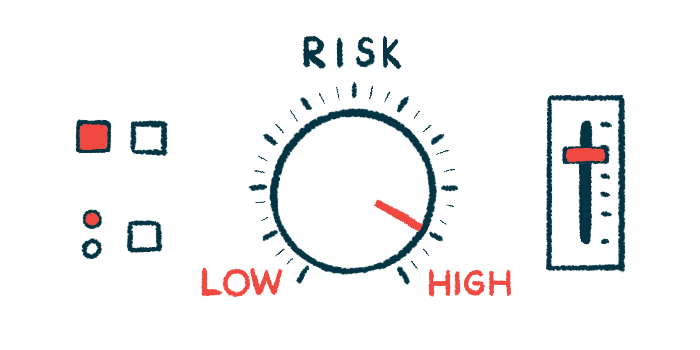New predictive model for NMOSD relapses found accurate in study
Researchers in China built model based on lab, clinical risk factors

A predictive model based on laboratory and clinical risk factors for relapses in neuromyelitis optica spectrum disorder (NMOSD) was found to accurately discriminate NMOSD patients experiencing a relapse within one year of diagnosis from those without a relapse, a study showed.
The identified risk factors were numbers and ratios of immune cells — specifically B-cells, natural killer (NK) cells, neutrophils, and lymphocytes — non-use of immunosuppressive treatments, and worse disability as assessed with the Expanded Disability Status Scale (EDSS).
According to the team, from two university hospitals in China, these “risk factors for NMOSD relapse within [one] year after the first onset … can serve as predictive indicators” for further relapses.
“Early identification of the high-risk relapse group is crucial for the individualized management of NMOSD,” the researchers wrote.
The study, “Relapse risk factors analysis within 1 year after the first onset of neuromyelitis optica spectrum disorders: A two-center retrospective study,” was published in Multiple Sclerosis and Related Disorders.
Researchers first ID’d factors linked to higher patient relapse risk
NMOSD is a progressive autoimmune disease marked by inflammation in the spinal cord and the optic nerve, which relays signals between the eye and the brain. People with NMOSD have periodic episodes of inflammation, separated by periods of remission.
With each relapse, symptoms such as vision problems, uncomfortable burning or tingling, and painful involuntary muscle contractions, tend to worsen.
As such, “in-depth research into the factors influencing NMOSD relapse and the development of effective, individualized preventive measures are crucial for reducing disability and improving patients’ quality of life,” the researchers wrote.
To that end, the team first analyzed the medical records of 102 NMOSD patients from two Chinese hospitals. Among them, 61 had experienced a relapse within a year of diagnosis and 41 had not.
The researchers found that several laboratory and clinical factors differed significantly between the two groups at diagnosis.
Patients who relapsed had significantly higher EDSS scores, indicating more severe disability, and were significantly less likely to be on immunosuppressive treatments than those who did not relapse.
The relapsed group also had a significantly higher neutrophil-to-lymphocyte ratio (NLR) — indicating greater inflammatory responses — as well as higher B-cell counts and lower NK cell counts.
Further statistical analyses confirmed that all these factors were significant risk factors for NMOSD relapse.
Specifically, higher NLR, B-cell counts, and EDSS scores were significantly associated with a higher risk of relapse within one year of diagnosis. Conversely, high NK cell counts and the use of immunosuppressive treatments were significantly associated with a lower relapse risk.
Use of predictive model may help guide treatment choices in NMOSD
Based on these factors, the researchers developed a predictive tool, called a nomogram, to help doctors estimate an NMOSD patient’s relapse risk based on the individual’s medical data. The model could distinguish patients who relapsed within a year of diagnosis from those who didn’t in 79% of the cases.
The development of this [predictive model] is intended to offer clinicians valuable guidance and support in making informed decisions regarding the individualized diagnosis and treatment of NMOSD patients. … By doing so, it is hoped that the model will contribute to a reduction in disease relapses and an enhancement in patient prognosis.
According to the researchers, this new predictive model “is simple and intuitive,” with all data necessary for its use easily obtained through routine clinical and laboratory testing.
“Identifying high-risk factors for disease relapse at an early stage is of paramount importance, as it informs and guides critical treatment decisions,” the researchers wrote, noting that “the development of this nomogram is intended to offer clinicians valuable guidance and support in making informed decisions regarding the individualized diagnosis and treatment of NMOSD patients.”
“By doing so, it is hoped that the model will contribute to a reduction in disease relapses and an enhancement in patient prognosis,” the team added.








